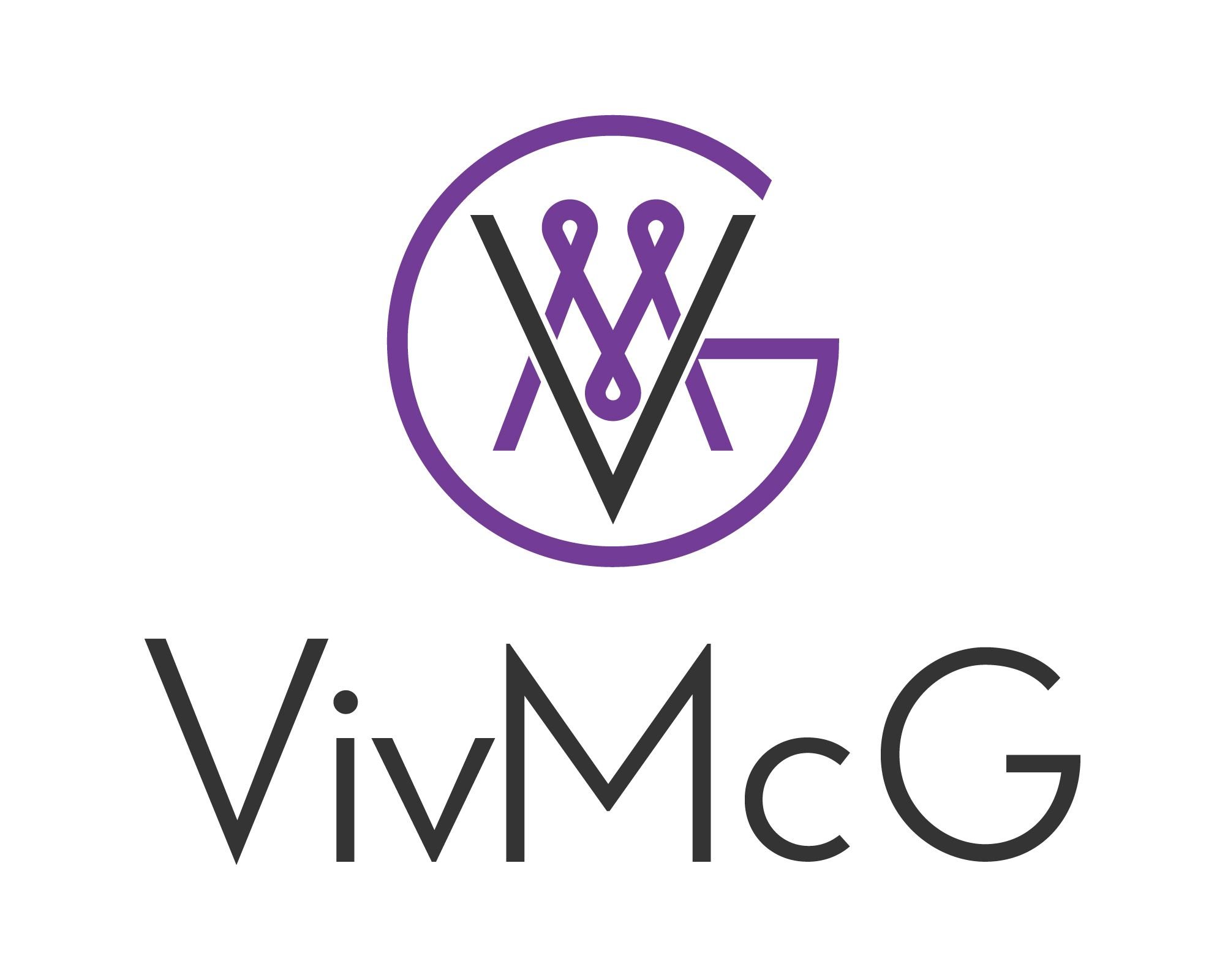12 foods that slow the signs of aging
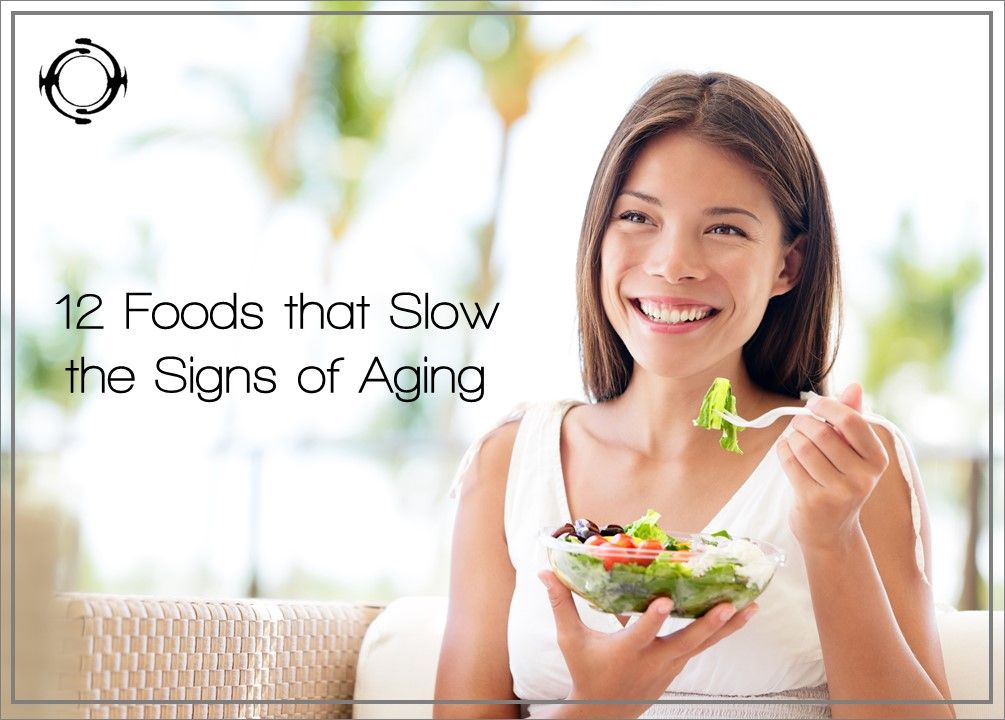
The key to eating
a diet that will slow down the signs of aging is to eat one that is rich in
anti-oxidants.
Anti-oxidants as
the word itself explains are anti (against) oxidants; they prevent cell damage
caused by oxidants.
Oxidants are free
radicals that you find both in the environment (e.g. via pollution, smoke,
alcohol) and, naturally, within your body.
Our bodies create
oxidants to fight off viruses and microbes. The problem arises when too many
oxidants are present. Not only can this lead to disease but it also contributes
to the aging process.
According to the
Free Radical Theory of Aging, organisms age because cells accumulate free
radical damage (i.e. oxidate) over time. To reduce this damage we need to
introduce the opposite of oxidants, namely anti-oxidants.
However it’s not a
case of bulking up on anti-oxidants to keep the oxidants in check. We need to
ensure we keep a balance of oxidants and anti-oxidants as a level of oxidants
in our bodies are important for our welfare. Luckily it’s difficult to overdose
on anti-oxidants but, still, bare in mind that too much of a good thing isn’t
always good. So eat and enjoy the foods I have listed below as part of your
daily diet. There’s no need to binge-eat.
As usual, the
trick is to eat a rainbow of food each day and, when it comes to fruit and veg,
eat at least 10 portions daily.
You’ll notice in
the list of foods below that they do not only reduce the visual signs of aging,
such as wrinkles, but other signs of wear and tear, apparent in aging bodies.
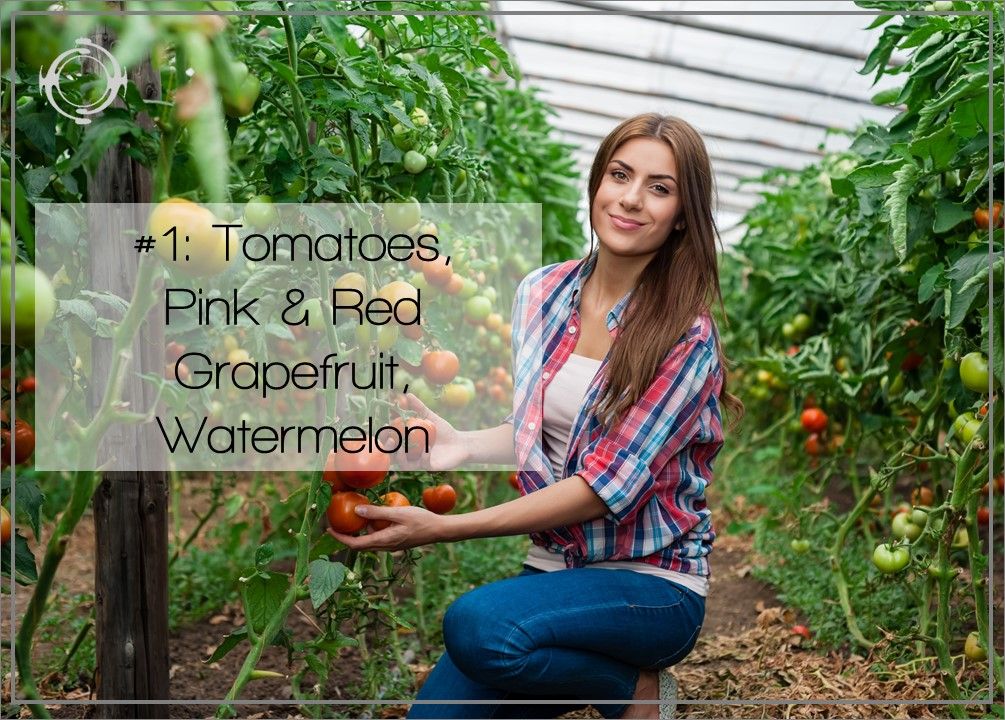
#1: Tomatoes, Pink & Red Grapefruit,
and Watermelon
These foods
contain a carotenoid called lycopene.
Carotenoids are
what give food its bright colour. And lycopene is considered to be one of the
most powerful anti-oxidants in the world.
But this is not
the only health benefit lycopene brings to the table. It is also considered to
be a cancer-fighting food (research has proved its ability to fight breast and
prostate cancers), it is said to keep your eyes healthy for longer (it may be
able to prevent/delay cataracts and reduce macular degeneration), improves the
health of your heart (helps lower blood pressure and can help treat heart
disease)… to name but a few benefits.
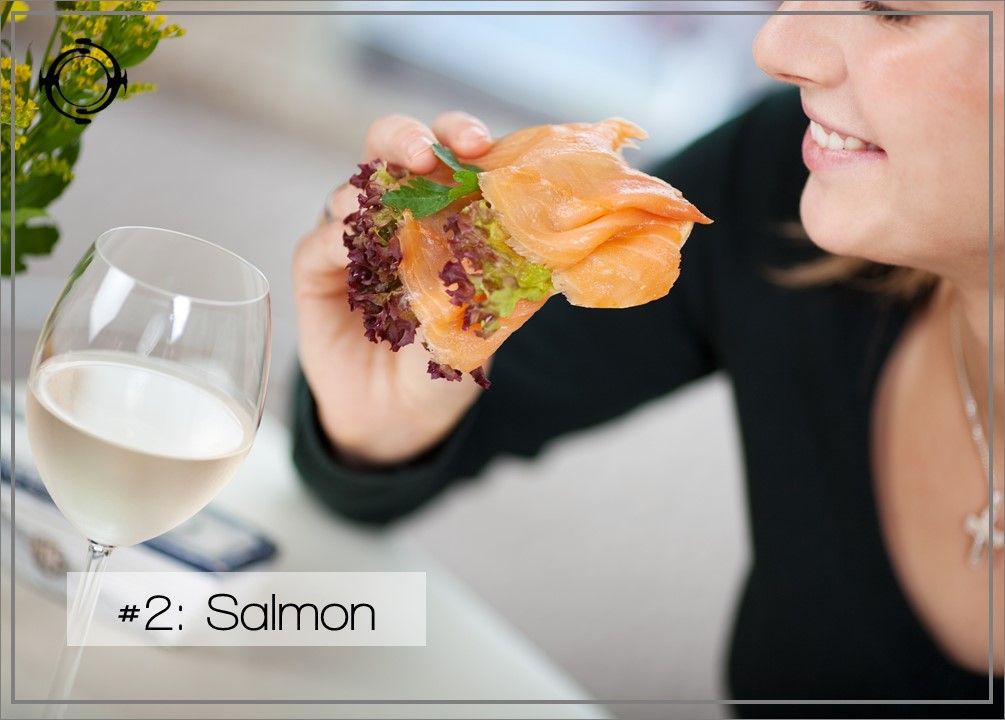
#2: Salmon
Salmon appears on
my list due to its unusually high level of Omega-3 fatty acids. Not only do
these healthy fats reduce fine lines and wrinkles, but they also reduce clogged
pores and the production of inflammation.
But that’s not
all. Food high in Omega-3 fatty acids may decrease the risk of many cardiovascular
problems, have a positive effect on your mood, protect joints by preventing
inflammation, decrease the risk of chronic dry eye and macular degeneration in
eyes, and is associated with decreasing the risk of several cancers including
breast, prostate and colorectal… and more.
It is said that by
making salmon part of your regular diet, eating it 3 times each week, you could
see more youthful, fuller skin in only 6 weeks. Try it and let me know.
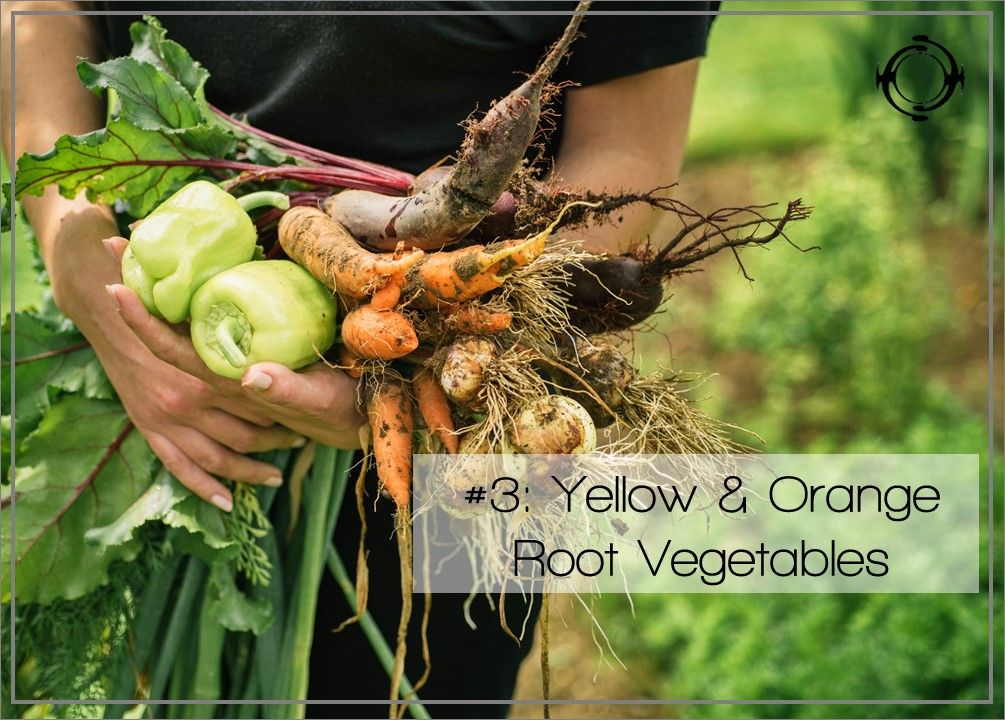
#3: Yellow and Orange Root Vegetables
Yellow- and orange-coloured
foods are chock-full of beta-carotene.
Beta-carotene is
the pigment found in plants that gives them their yellow and orange colour. Once
eaten, it is converted by the body into Vitamin A, a powerful anti-oxidant that
encourages skin repair.
Additionally,
beta-carotene can help protect the skin against sunburn, although this doesn’t
mean you should stop using a sunscreen. And research has shown that it helps
prevent the formation of UV-induced erythema i.e. skin irritation and redness.
Other health
benefits associated with beta-carotene include the healthy development of a
foetus during pregnancy, the potential to treat oral leukoplakia (the thick
white patches that can form inside your mouth), and help reduce respiratory
problems such as phlegm production and shortness of breath.
You’ll find
beta-carotene in carrots, sweet potatoes, squash, and pumpkins.
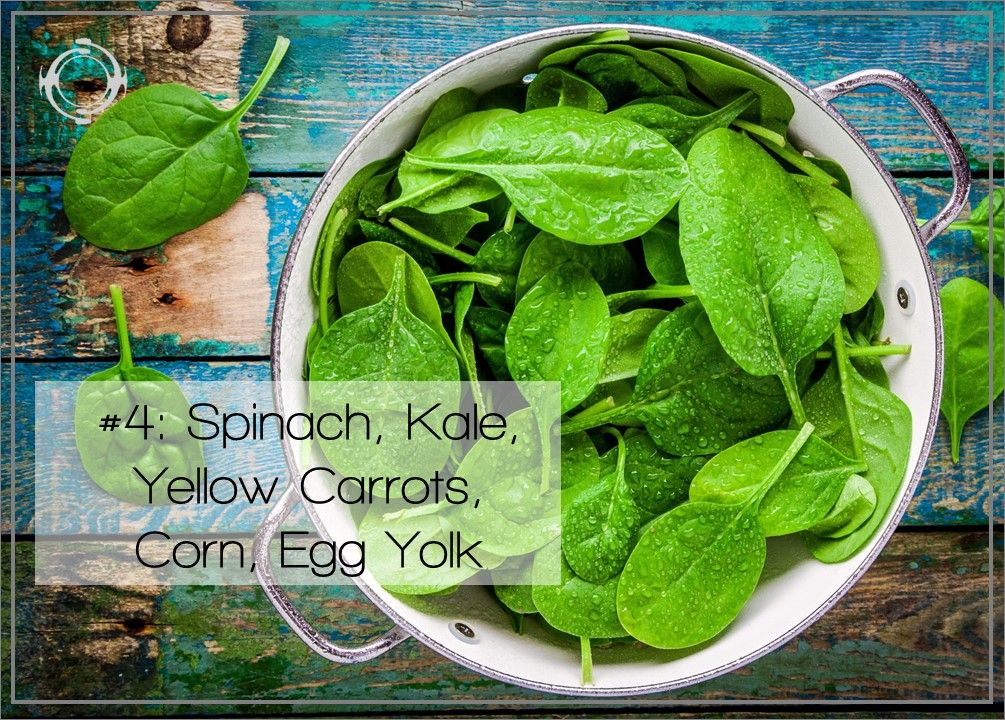
#4: Spinach, Kale, Yellow Carrots, Corn and
Egg Yolk
These foods
contain Lutein, a yellow pigment which occurs widely in yellow-coloured foods
and leafy vegetables.
Lutein helps
filter the high-energy wavelengths of visible light and, thus, slows down the
rate of oxidative stress and skin aging. Research also suggests that it may be
able to protect the skin against sun damage such as wrinkles.
Besides protecting
and skin, Lutein is best associated with eye health and is considered a natural
treatment for macular degeneration. It protects the eyes by filtering out a
element of damaging UV light that can negatively impact delicate parts of the
eye such as the macula (the retina).
Additionally,
Lutein is believed to help lower the risk of diabetes and cancer (breast, lung,
cervical and colon), and can help maintain a healthy heart.
Of all the foods
mentioned above, egg yolks contain the highest levels of Lutein.
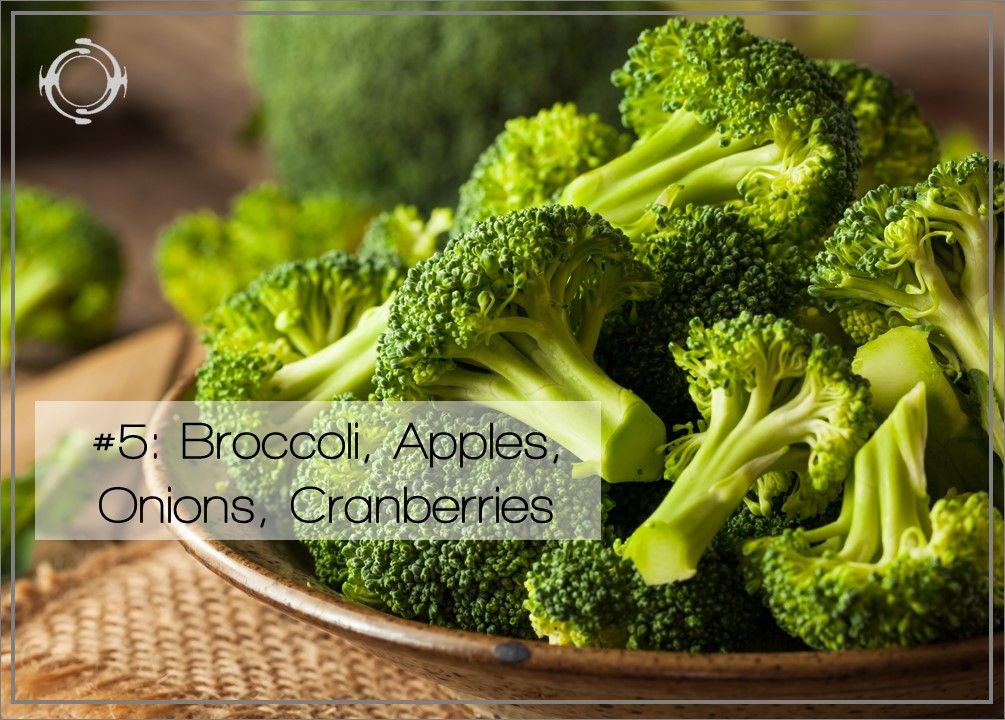
#5: Broccoli, Apples, Onions, and
Cranberries
These foods
contain the powerful anti-oxidant and anti-inflammatory, Quercetin, a member of
the flavonoid family which is a group of anti-oxidants with soothing
properties.
As it is an
anti-inflammatory (as well as an anti-oxidant) it can help prevent wrinkles,
thus slowing the signs of aging.
Not only are the
anti-inflammatory properties of Quercetin beneficial for our skin, but they are
beneficial in fighting a whole host of diseases because research now shows that
inflammation is the root of most diseases including autoimmune illnesses,
cancer, and heart diseases.
Additionally,
Quercetin is associated as beneficial in fighting allergies because it is an
anti-inflammatory and natural anti-histamine, supports heart health as it
reduces inflammation, helps fight pain associated with autoimmune disorders and
arthritis etc due to its anti-inflammatory properties, and may help fight
cancer due to its unique anti-proliferative (preventative spread of cells) effect
on cancer cells.
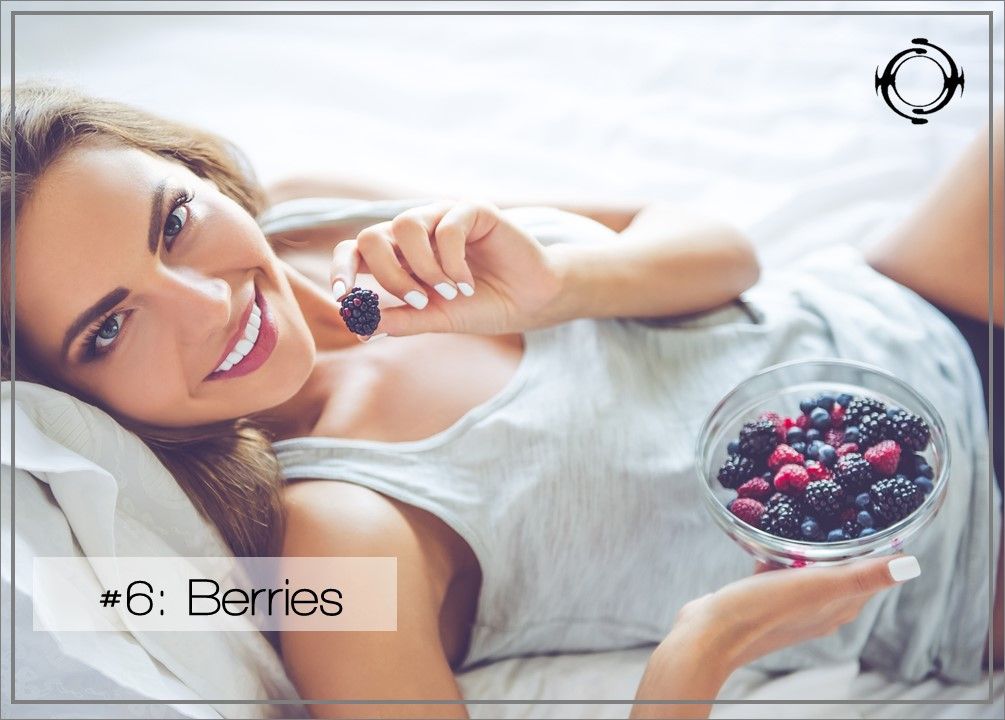
#6: Blueberries, Raspberries, Cranberries,
Blackberries, Bilberries, and Black/Red Grapes
The anti-oxidant
Anthocyanin is what gives these fruits their bright red, blue and purple
colours. They can help repair damaged cells, promote the growth of new ad
healthy cells, and protect against free radicals. However Anthocyanins are most
revered for their ability to reduce inflammation and stabilise collagen by
preventing free radical damage which prevents enzymes from attaching to
collagen.
Whilst most fruits
contain at least some Anthocyanin, the ones mentioned above are those
considered to be most rich in this anti-oxidant.
A study performed
by the Department of Food & Nutrition and Korean Institute of Nutrition on
Bog Blueberries concluded that the high content of Anthocyanin in these berries
alleviated premature aging of the skin caused by repeated exposure to UV
radiation primarily from the sun (i.e. photo-aging) and the toxic effects of UV
light on the skin, as well as reduced the degradation of collagen in human skin
that had been subjected to UVB radiation.
In addition to the
above, Anthocyanins have been scientifically proven to improve heart health and
reduce cholesterol, may fight obesity, are a great way to slow age-related
degeneration of the brain function and memory, and preliminary research shows
promising results that they may be an effective way to prevent the development
of several forms of cancer such as breast, prostate, oral and colon.
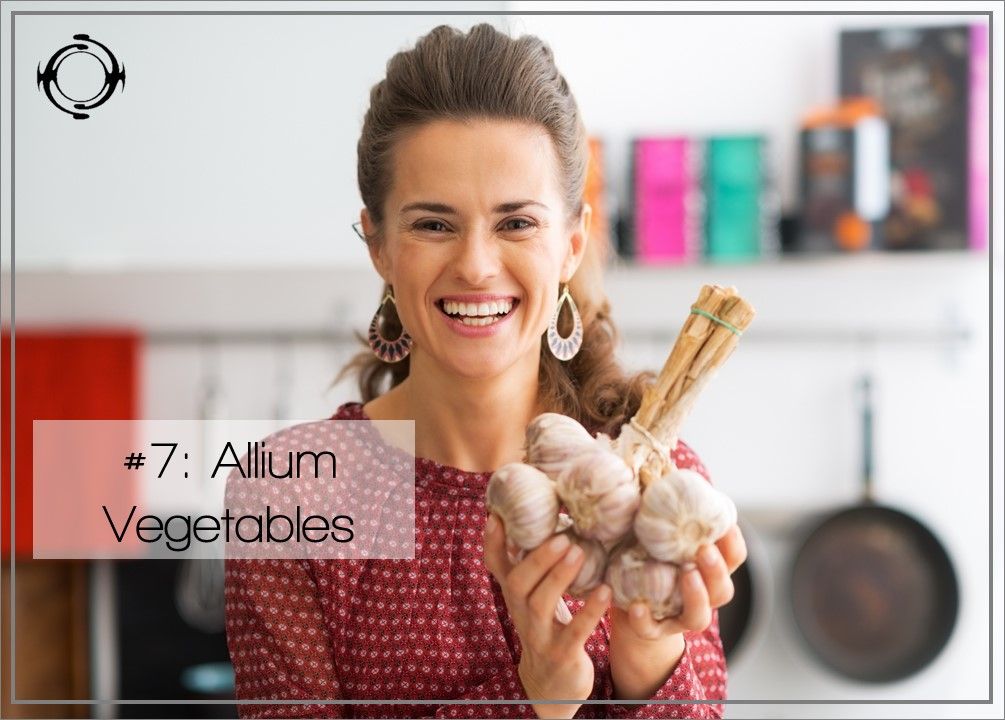
#7: Garlic, Onions, Shallots, Leeks, and
Spring Onions (aka Scallions)
Members of the
onion family (or Allium Vegetables) are high in anti-oxidants and
anti-inflammatory properties, both of which we now know are important in
reducing and slowing the visible signs of aging on our skin.
But these humble vegetables
pack even more punch. For example, research has linked onions to the prevention
of cancer and heart disease as well as reducing the risks of developing
arthritis, asthma, and diabetes. And knowledge of garlic’s anti-bacterial and anti-viral
properties go back centuries to folklore is attributed to protection against
vampires and werewolves.
As with all other
foods on this list, allium vegetables have many more health benefits beyond
that of our skin including cardiovascular protection, lowering of blood pressure
and cholesterol levels, can fight some cancers, and provide anti-clotting
benefits.
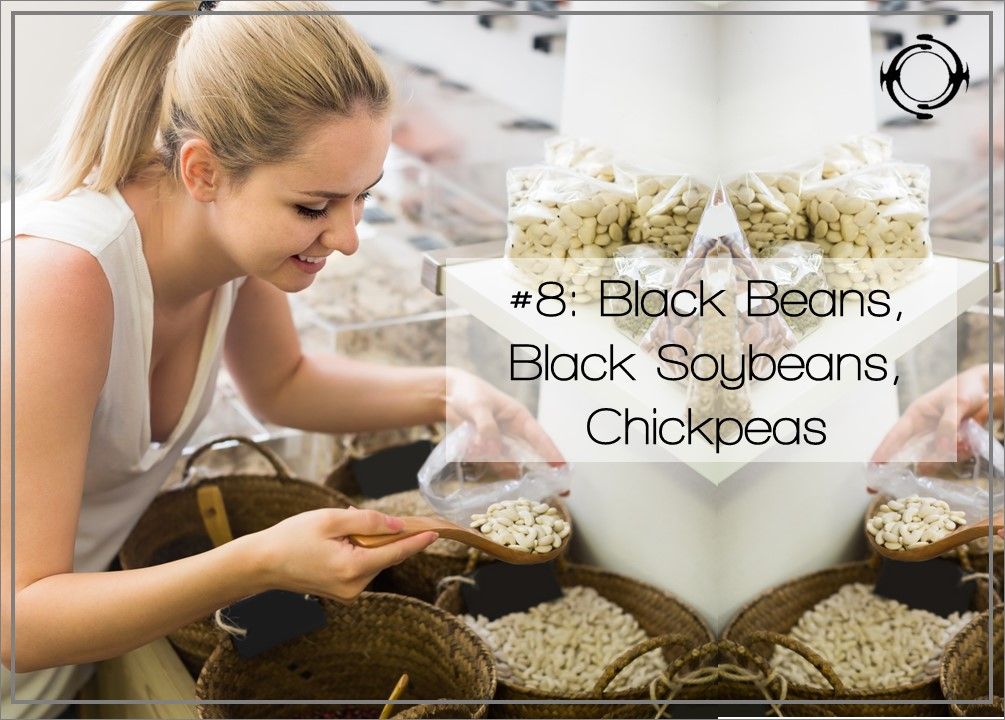
#8: Black Beans, Black Soybeans and
Chickpeas
Similar to
berries, these beans are high in the anti-oxidant Anthocyanin so they attract the
same anti-aging benefits.
In addition, black
soybeans and chickpeas are high in Isoflavones, a plant-based oestrogen that is
reported to reduce wrinkles, reverse sun damage, and tighten sagging skin.
When it comes to plant-based
oestrogens (or phytoestrogens) in the diet, science is split and can even seem
to contradictory. Sometimes they’re good for you, sometimes not. So before
adjusting the amount of foods you eat which are phytoestrogens, please first
consult your doctor.
However phytoestrogens
do have their benefits which include the reduction and even prevention of cancers
such as breast and ovarian, improvement in heart health especially in post-menopausal
women, improve health during menopause, may help with weight loss, and may
increase libido.
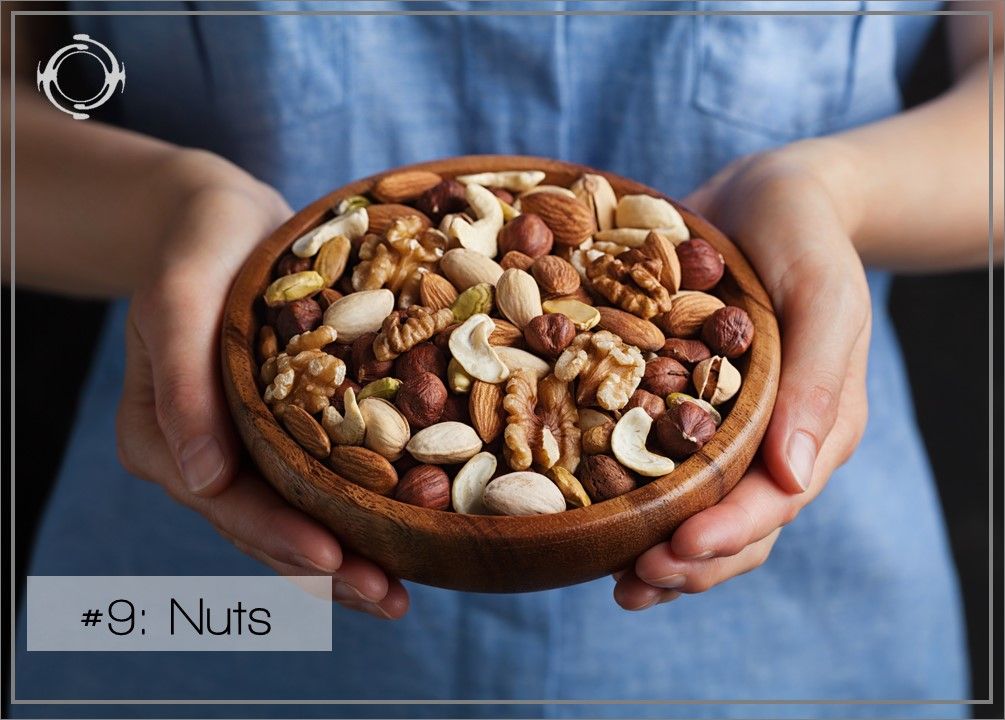
#9: Nuts
Nuts are full of
vitamins and minerals such as vitamins A, C, and E and copper and zinc which
promote healthy collagen production and help provide a glowing, smoother-looking
complexion. Not only that but a study performed by Harvard University showed
that a handful of nuts every day is a key to living longer.
The best nuts you
can eat include:
Almonds – a brilliant
anti-inflammatory which helps reduce wrinkles, these nuts are also high in Vitamin
E ensuring that your skin stays hydrated for longer because they encourage the
blood vessels to stay dilated. They also fight against skin diseases such as
acne, eczema, and psoriasis.
Brazil Nuts – these
nuts are not only high in Omega-3 fatty acids, which fight inflammation, but also selenium, which improves the skin’s
elasticity and fights inflammation that causes pimples. Additional Brazil Nuts
are said to help weight loss.
Cashew Nuts –
these nuts are also high in the mineral, selenium, which protects cells from
damage and reduces wrinkles, fights skin infections, reduces inflammation. They
also contain zinc which promotes healing, and cell growth and renewal which is
especially beneficial for infected or damaged acne areas.
Chestnuts – these are
the only nuts that are packed full of Vitamin C with a quarter cup of them
providing 30% of your recommended daily allowance of this vitamin, according to
The National Institute of Health. Vitamin C is essential for the body to
produce collagen and elastin. Eating a handful of chestnuts each day will help
prevent collagen breakdown and heal broken capillaries which will lead to clearer
healthier-looking skin.
Macadamias – these
nuts are packed full of Vitamin E (delay premature wrinkles), iron, protein,
and Vitamin B2 (maintains healthy collagen levels for radiant, plump skin).
Pistachios – these
nuts contain the anti-inflammatory, Resveratrol, which is also found in red
wine. It neutralises free radical damage and, as a result, enables the
production of collagen which leads to healthy plump skin. They are also said to
benefit weight loss and promote healthy cholesterol, They have further been associated
with controlling type-2 diabetes; the impact of healthy glucose levels being
positively linked to reduced stress levels.
Walnuts – high in
Omega-3 fatty acids, these nuts have great anti-inflammatory properties so are
excellent for the health and youthful appearance of our skin. They are also
said to increase Vitamin B levels which keeps wrinkles and fine lines at bay.

#10: Water
Question: How many
times have you heard someone tell you that you need to drink plenty of water to
keep your skin hydrated and looking younger for longer?
Well.... just
because you drink plenty of water doesn't mean you won't have dry skin.
According to
Dermatologist, Kenneth Bielinski, whilst the skin of someone who is severely
dehydrated will benefit from drinking fluids, the average person's skin does
not reflect the amount of water they consume.
I recommend
drinking plenty of water for your health, not just your skin.
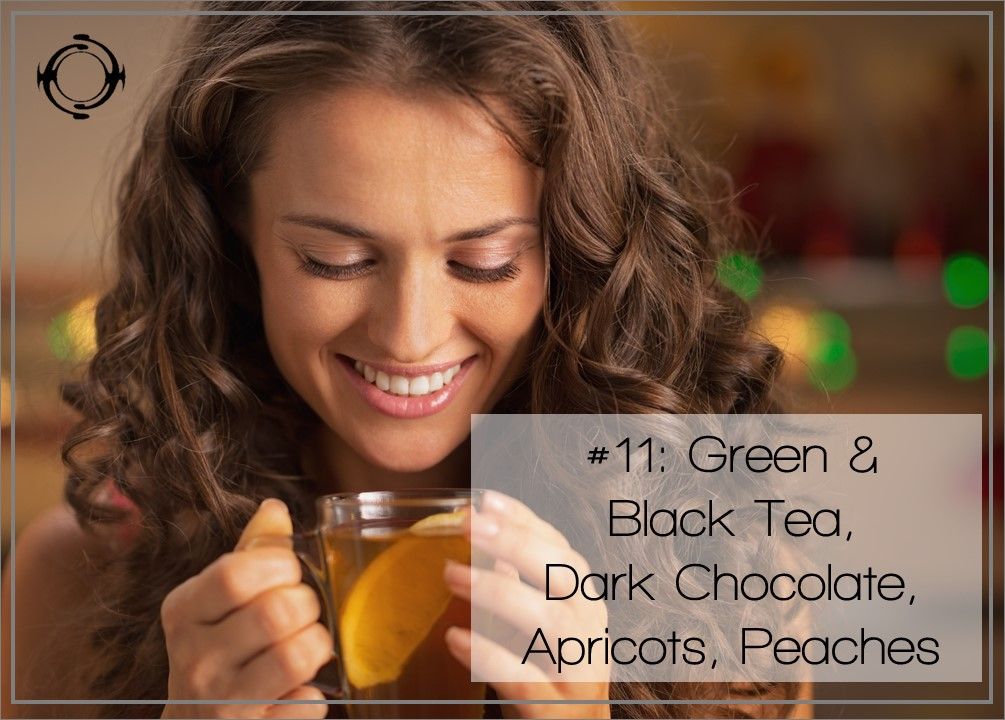
#11: Green & Black Tea, Dark Chocolate,
Apricots and Peaches
Green tea and dark
chocolate contain Catechins which are polyphenolic and powerful anti-oxidants
which detoxify cell-damaging free radicals in the body.
Catechins increase
the skin’s self-healing capabilities and increase the skin’s defence. Like all
anti-oxidants, Catechins fight free radicals, reduce wrinkles and fine lines,
and protect the skin from sun damage.
But Catechins attract
other health benefits too, such as reduced chance of heart disease and stroke,
a faster recovery from heart attack, and lower cholesterol levels.
Tea’s property to
soothe stress also makes it, additionally, a good anti-aging drink as stress
can lead to premature signs of aging. And when brewing yourself a cuppa,
remember the longer you let the tea leaves steep, the more Catechins it’ll
release.
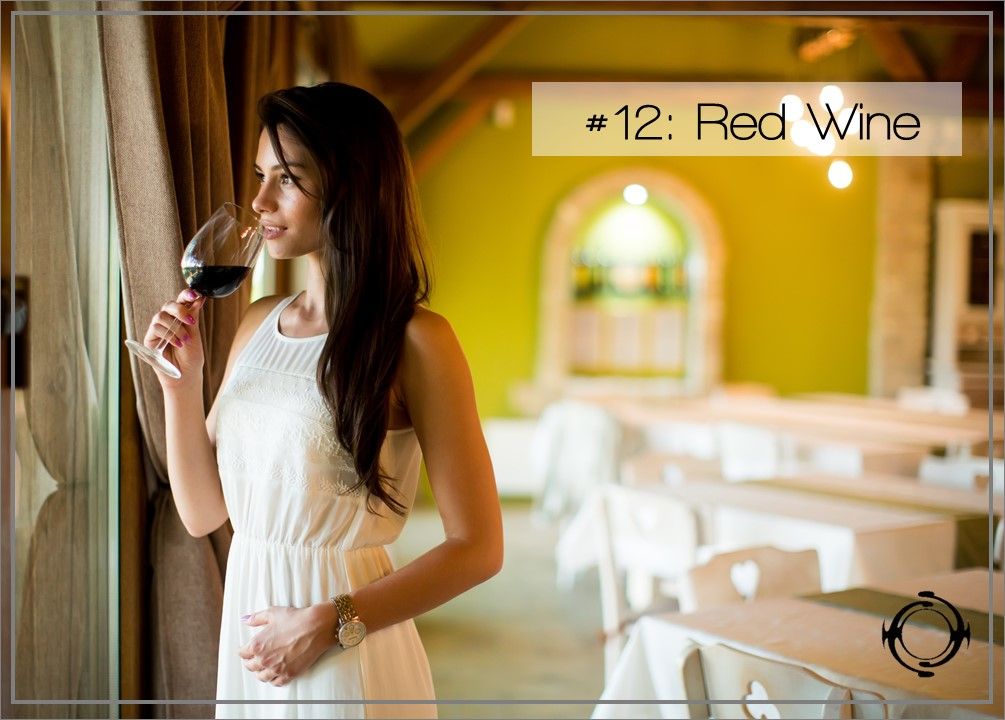
#12 Red Wine
I admit… I saved
the best to last.
Like the foods and
drinks above, red wine also has Catechins so also attracts the same beneficial
properties. But I have listed this drink separately as it also contains
Resveratrol, an anti-inflammatory which neutralises free radical damage and, as
a result, enables the production of collagen which leads to healthy plump skin.
Indeed it is said to be more effective than Vitamins A & C.
Also Resveratrol
works along the lines of oestrogen in that it maintains collagen levels and
moisture in our skin, leading to firmer, plumper skin. As we grow older, our
oestrgen levels drop resulting in fine lines and wrinkles, and thinner, less
elastic skin. Whilst Resveratrol cannot reverse the signs of aging nor can it fully
replace lost oestrogen levels, it can help slow the signs of aging. I’ll raise
a glass (or two) of red wine to that!
Research shows
that drinking red wine can help protect your skin from sun damage. It also
encourages our body to better maintain healthy cells, expanding their lifespan
and keeping our skin looking younger for longer.
Here’s something
to try if, that is, you can bare to donate some of your wine for another use. If
you slather red wine directly onto your skin, the Resveratrols will act
topically to protect your skin and inhibit damage from the sun’s UVA and UVB
rays.


